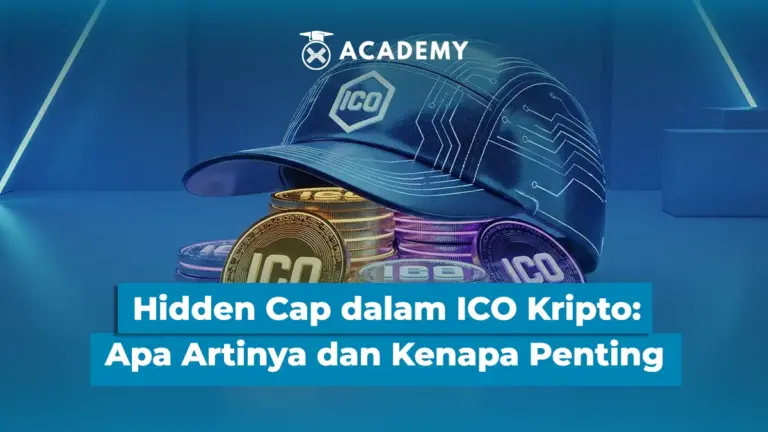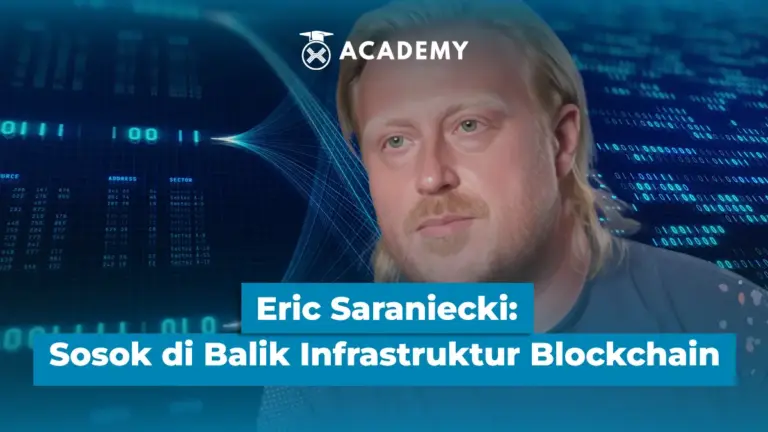Blockchain is slowly, but surely being used more and more by people around the world, and just like any other innovation, someone is credited as the inventor of this innovative system.
That figure is David Chaum, who became known in the 1980s when he organized the first annual crypto and cryptology conference, called “CRYPTO”.
This American cryptographer has made a huge impact on the fields of digital security and privacy, and is the creator of Ecash, the first attempt at building a functioning digital currency.
To learn more about David Chaum, from his life and education, his early contributions to cryptography, the creation of Ecash, to his impact on the Chyperpunk movement, check out the following review.
Read more: Sunny Lu: The Inspiration Behind VeChainThor’s Success
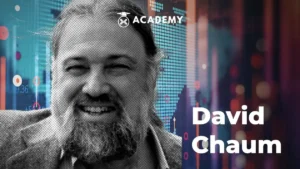
Who is David Chaum?
David Chaum was born in 1955 in New York City, 3 Chaum has spent his entire career creating new cryptographic algorithms that protect sensitive data in the digital age. Today, he is known as the “father of cryptocurrency cryptography” and also the “father of online anonymity”.
Chaum has an outstanding academic track record and has authored a number of important publications throughout his career. He attended UC Berkeley with Bill Joy, founder of Sun Microsystems, and Eric Schmidt, former CEO of Google from 2001 to 2011.
Chaum’s doctoral thesis, “Computer Systems Established, Maintained, and Trusted by Mutually Suspicious Groups” was published in 1982. The central ideas in this thesis emerged while he was relaxing in a hot tub.
In it, he proposed almost every element of the blockchain protocol summarized by Satoshi Nakamoto in the Bitcoin whitepaper, just twenty-six years earlier.
One component not included was proof-of-work (PoW), which allows nodes on decentralized networks like Bitcoin to reach consensus without the use of a third party.
PoW itself was only invented in 1993, and was only conceived and named in 1999, exactly 17 years after Chaum’s paper.
Early Contributions to Cryptography
When Chaum published a paper titled “Untraceable Electronic Mail, Return Addresses, and Digital Pseudonyms”, he set the foundation for the entire topic of anonymous communication.
The paper proposes a “mixed network” that groups and sends encrypted messages to its recipients as well as to a server, where the messages are then reordered and hidden so that only the server can determine who sent which message.
The messages are decrypted at the final destination after passing through additional servers and hidden there again.
This mixed network is today considered the conceptual ancestor of modern anonymous browsing tools like Tor. Chaum himself has since suggested that every router be made into a node in a Tor-like network.
Creation of Ecash
Ecash, developed by Chaum through his company DigiCash, was his first attempt at creating a working or usable digital currency.
In terms of how it works, users will download the Ecash software, which will store their money digitally by obtaining a cryptographic signature from a bank.
They can then use it online or at participating stores and restaurants without having to open a bank account or have a credit card. Payments are free for individuals, similar to some credit cards, but there are small fees for businesses.
Chaum was one of two keynote speakers at the first World Wide Web conference in Geneva while serving as CEO of DigiCash. Tim Berners-Lee, creator of the World Wide Web, was the other speaker.
While speaking live in front of the crowd, Chaum made his first Ecash transaction. Despite a promising start, Ecash did not become the instant sensation that many had hoped it would be.
Only one American bank, Mark Twain Bank in St. Louis, adopted it, and only 5,000 people signed up to use it during its first three-year trial.
However, Ecash grew in popularity in Europe, where cash is still widely used.
As early as 1998, several other banks, including Credit Suisse in Switzerland and Deutsche Bank in Germany, partnered with Ecash. But that was not enough. Because DigiCash closed at the end of the year.
Several theories try to explain why DigiCash failed. Two cryptography experts involved in the project, Nick Szabo and Zooko Wilcox O’Hearn, hypothesized that Ecash’s main problem was centralization.
Most major banks did not trust DigiCash, a single company overseeing the entire cryptocurrency operation.
Instead, a decentralized network is needed so that users can send virtual currencies directly to each other. A network like Bitcoin, for example.
Read more: Getting to Know the People: Blackrock Founder Larry Fink & the Evolution of Bitcoin
Founder of the International Association for Cryptologic Research (IACR)
When Chaum was a student at Berkeley, US government organizations like the NSA were increasingly antagonistic and skeptical of civilians doing cryptographic research.
According to Chaum, they tried to stop all cryptography development. He also claims that top NSA officials have threatened to arrest entire groups of civilian cryptographers.
To counter this growing hostility, Chaum founded the International Association for Cryptologic Research (IACR), which organizes cryptography conferences around the world and publishes the Journal of Cryptography. “Free cryptography” was Chaum’s only request to the IACR.
Chaum taught at the New York University Graduate School of Business Administration and later at the University of California, Santa Barbara after earning his PhD from Berkeley.
As interest in his theory began to grow, Chaum decided to apply the theory by creating Ecash, the predecessor to Bitcoin.
Impact on the Cypherpunk Movement
Cypherpunks are a group of cryptography experts who study how privacy and encryption tools are used, especially considering how they can trigger major changes in social, political, or economic life around the world.
Members of this group include Satoshi Nakamoto, the creator of Bitcoin; Hal Finney, the inventor of reusable proof-of-work (RPoW); and Adam Back, the creator of the Hashcash function used by Hal Finney and Satoshi in their respective inventions.
However, if it wasn’t for David Chaum’s efforts and influence then these Cypherpunks might not exist at all.
Development of the xx Network
After the revelations of the NSA mass surveillance scandal, Chaum created the xx network for completely private and secure communications and payments.
The xx network removes metadata to maintain user privacy and disguise the identity of the sender.
Chaum himself was shocked and stunned by Snowden’s revelations about the NSA’s mass surveillance schemes in 2013.
A platform called the xx network is now in use, and functions similarly to Tor, whose basic technology is largely based on Chaum’s work, but with some significant improvements.
According to Chaum, xx network should work faster than networks like Tor, which cannot provide enough speed for users to contact multiple people at once securely.
The xx network achieves this by using smaller groups of nodes to achieve “uniform mixing” of messages so that it mixes all user messages together.
In about two and a half seconds, each message traverses five randomly selected nodes, disguising which message belongs to whom. For a malicious actor to read a message, it would require the five random nodes to fully cooperate, which is highly unlikely.
Chaum is excited for the network to launch in January 2022. He said:
“Privacy in messages and payments, and the like, is fundamental to democracy. Now is the time to vote, because this is a key differentiator between civilizations in the future.”
Introduction of the Blind Signature Concept
In 1983, Chaum published a paper titled “Blind Signatures for Untraceable Payments” which formally established the concept of “blind signatures” that he introduced in his 1982 paper (Computer Systems…).
Blind signatures are a type of digital signature where the content is hidden (or blinded) before it is signed. It was a significant advance in the field of cryptography, especially for cryptocurrencies as it allowed for anonymous transactions.
These three papers, along with Chaum’s other work in cryptography, have been described as the technical roots of the most influential and pioneering cryptographic movement, the Cypherpunks.
Views on Privacy and Encryption
Chaum does not believe that mainstream communication apps that promise “end-to-end encryption,” such as WhatsApp, will provide more privacy or protection from the government.
“This is a criminal act. It exploits the public in the worst possible way,” he said, “because the real value in the information is the traffic data… the social graph of the sender and its relationship to the time of the event.”
According to Chaum, such information can be used politically, as the Facebook and Cambridge Analytica scandals have shown.
To provide individuals with a way of communication hidden from the prying eyes of the NSA, he decided to create a completely private, secure and decentralized messaging and payment network.
Chaum’s network is able to encrypt message content and hide the identity of the sender by improving on the mixing technology he helped create in the early 1980s.
This enhanced privacy is achieved by removing metadata that can show who sent a message to whom.
Read more: Barry Silbert: Crypto Investment Pioneer in Grayscale
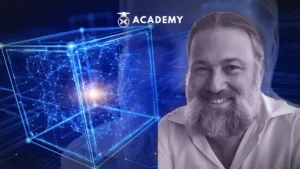
Speculation as Satoshi Nakamoto
There is growing speculation that David Chaum is Satoshi Nakamoto. The following is a series of evidence that is considered to support this speculation, including:
1. Has the Right Technical Skills and Academic Background
David Chaum not only has a degree and doctorate in computer science, but has also contributed many papers in the field of cryptography and computer science. Of all the people who could be Satoshi, David Chaum is probably the most academically qualified.
2. Once a Cypherpunk
Chaum was one of the early Cypherpunks and much of the group’s work and inventions were based on Chaum’s ideas.
3. Creating Ecash, Bitcoin’s Predecessor
There are several candidates for “Bitcoin before Bitcoin”, but Chaum’s Ecash was the first undeniably global attempt to build a working digital currency.
Although unsuccessful, Ecash provided the foundation on which all future cryptocurrencies were built.
4. Almost Invented Blockchain
Blockchain technology is at the core of Bitcoin and Chaum is often attributed with the invention even though he did not fully finalize the idea.
Chaum almost perfectly described blockchain in his thesis “Computer Systems Established, Maintained, and Trusted by Mutually Suspicious Groups.”
The one element Chaum missed was proof–of–work,, which wasn’t invented until seventeen years after he published the paper.
David Chaum’s social media bend: X.com




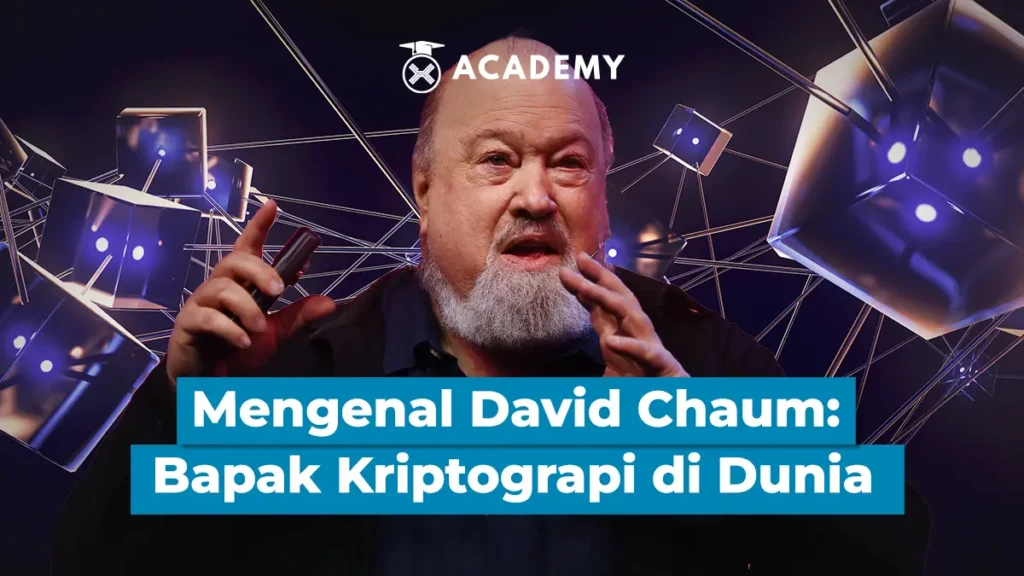
 Polkadot 9.23%
Polkadot 9.23%
 BNB 0.57%
BNB 0.57%
 Solana 4.89%
Solana 4.89%
 Ethereum 2.37%
Ethereum 2.37%
 Cardano 1.22%
Cardano 1.22%
 Polygon Ecosystem Token 2.17%
Polygon Ecosystem Token 2.17%
 Tron 2.83%
Tron 2.83%
 Market
Market